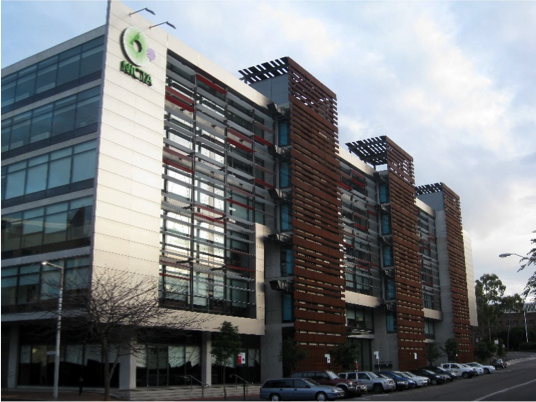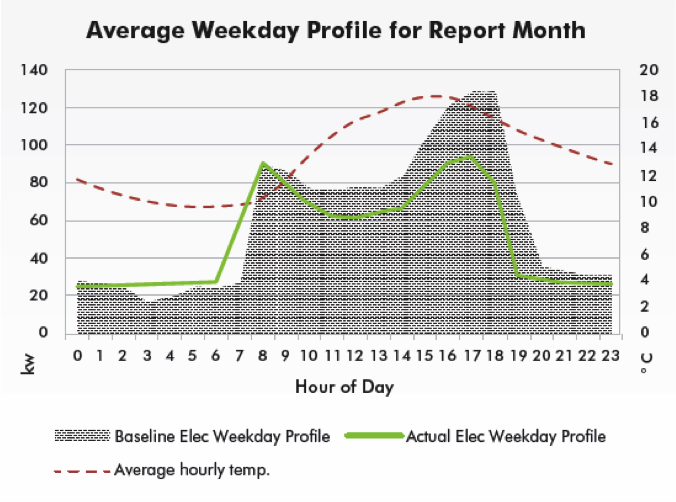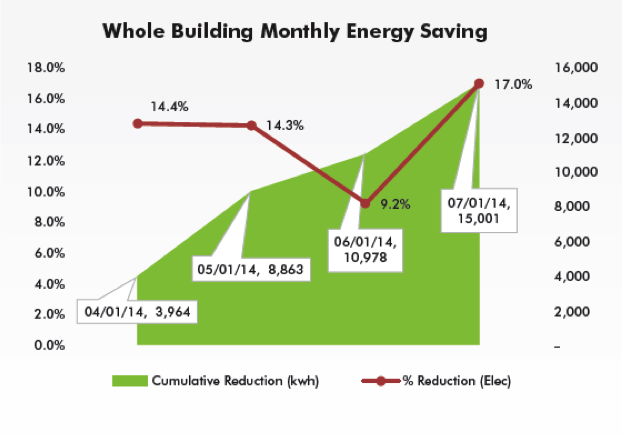Code Green Solutions


The Australian Technology Park (ATP), located in the suburbs of Sydney, is a business and technology center that serves as an incubator for high-tech startups and brings together research and commercial interests in a symbiotic environment. Five distinct buildings make up the ATP, one of which is occupied by the National Information and Technology Communications Center of Australia (NICTA). NICTA’s 36,752 sq ft (11,202 square-meter) building is just five years old, boasting state-of-the-art technology. Despite already being renowned for its energy efficiency, NICTA and the ATP were looking for solutions to further reduce energy consumption.
BuildingIQ’s Predictive Energy Optimization™ (PEO) platform was chosen to maximize the previous investments made in the NICTA facility and generate new savings. The cloud-based software continuously monitors inputs including weather forecasts, occupancy comfort, energy prices and demand-response events in order to provide and implement the most efficient 24 hour operating strategy for a building’s HVAC system. The platform makes automatic changes to temperature and pressure, without the need for manual intervention. Installation requires little change to a building’s existing infrastructure, but there were challenges that had to be overcome.The Challenge:
The central challenge for this deployment was whether BuildingIQ’s PEO platform could make a difference to a facility that was already considered a well-tuned, high-performing structure. The NICTA building had a NABERS score of 5.5—on a scale that runs from 0 to 6.0—and improvements were, at best, likely to be marginal. Although the NICTA staff strongly encouraged a trial run and were extremely receptive to new technology, their expectations for significant energy savings were low.
The client’s stated requirements for success were threefold:
The Solution:
BuildingIQ initiated its incorporation with a site assessment for all four buildings, establishing a baseline of historical data, examining individual building management systems (BMS) and evaluating the ease with which PEO could be integrated for energy optimization. The team found that the NICTA building had a relatively new Delta BACnet system that would respond well to BuildingIQ’s platform.
Working with ATP’s facilities staff, the setup for the trial run took only about a week. The extended learning phase—when the model learns the specific thermal dynamics of the building under changing conditions—lasted for about a month and a half. After that, the optimization process began.
The relationship with the technical staff at NICTA bordered on a strategic alliance, as they had a burning desire to support energy innovation and were rooting for the success of a sophisticated, home-grown technology. BuildingIQ’s platform evolved from research carried out over many years at Australia’s CSIRO—the Commonwealth Scientific and Industrial Research Organization. The ATP staff brought the BuildingIQ team together with the four companies responsible for onsite mechanical work and BMS operations. The parties worked collaboratively to ensure success.
The Results
Early results from the NICTA trial run have shown substantial improvement in energy savings. After running for a few weeks, energy savings had reached 17 percent of total power. ATP staff, vendors, and NICTA colleagues were not only surprised at the savings in such a high-performing building but skeptical enough to challenge the results.
The transparency of the BuildingIQ system made it a relatively straightforward matter to review the historical baseline, walk through the optimization process, and display the results using charts and graphs. They could see the kWh consumption dropping day by day, and were convinced of the efficacy of BuildingIQ’s model. Despite the altered temperatures during optimization process, the client did not receive one single complaint from tenants. BuildingIQ and the ATP were the recipients of the National Energy Efficiency Council (EEC) Award for this installation, which was recognized as the “Best Commercial Energy Efficiency Project in 2014” in Australia.
 Editor’s Note: This article was co-authored by Roy Arindam, National Director of Sales – AU for BuildingIQ.
Editor’s Note: This article was co-authored by Roy Arindam, National Director of Sales – AU for BuildingIQ.